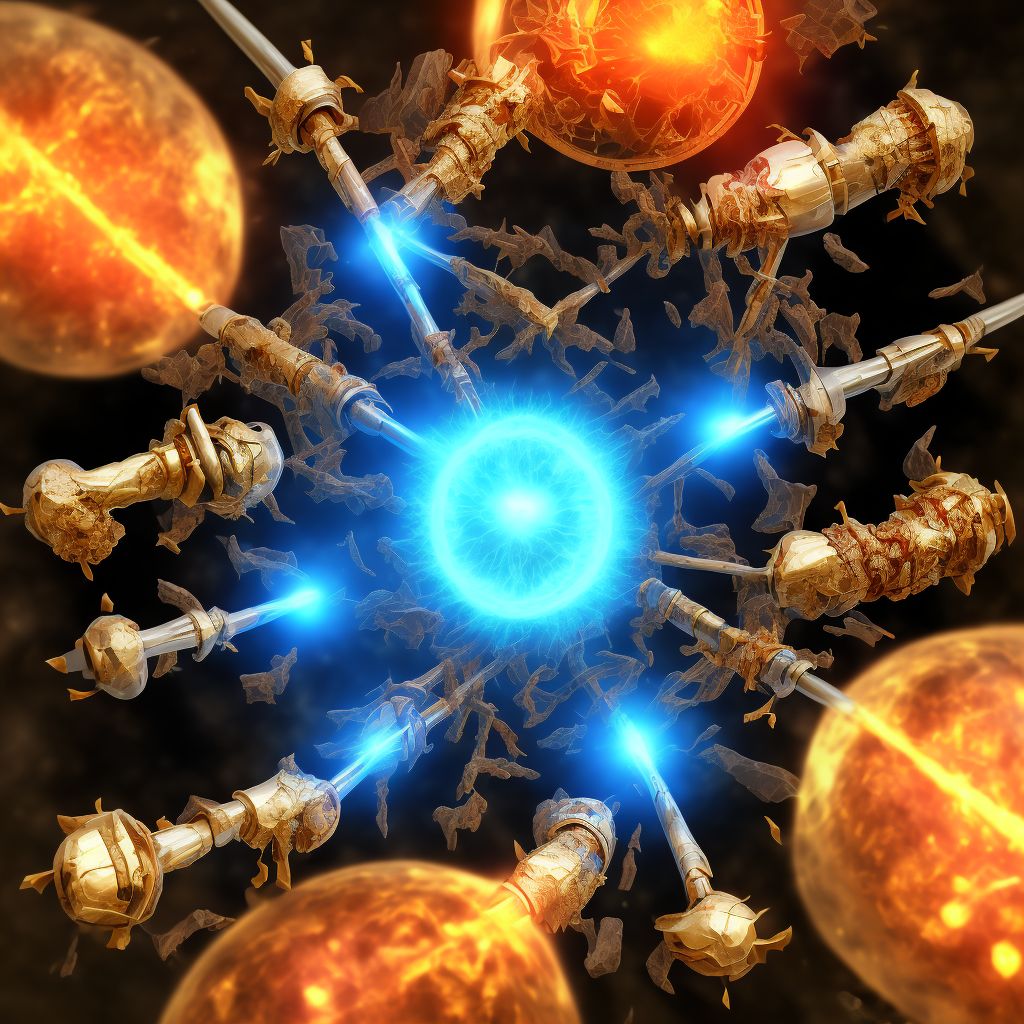
Displaced spiral fracture of shaft of left tibia, subsequent encounter for open fracture type IIIA, IIIB, or IIIC with routine healing Save
ICD-10 code: S82.242F
Disease category: S82.242: Displaced spiral fracture of shaft of left tibia
Displaced Spiral Fracture of Shaft of Left Tibia: Understanding Open Fracture Types IIIA, IIIB, or IIIC and Routine Healing
A displaced spiral fracture of the shaft of the left tibia is a complex injury that requires careful understanding and management. In some cases, the fracture may lead to an open fracture, categorized as type IIIA, IIIB, or IIIC. While treatment options vary depending on the severity and type of the open fracture, routine healing plays a crucial role in the recovery process.
Open fractures occur when the broken bone penetrates the skin, leaving the fracture exposed to the external environment. Type III open fractures are particularly severe, involving extensive soft tissue damage and potential contamination. These fractures are further classified based on the degree of soft tissue injury, ranging from IIIA (adequate soft tissue coverage) to IIIC (arterial injury requiring repair).
Despite the complexity and severity of these fractures, routine healing is a natural process that the body initiates to repair the damaged bone and surrounding tissues. Following appropriate medical intervention, routine healing involves several stages:
- Inflammatory Phase: The body responds to the injury by sending immune cells to the site, initiating the process of inflammation. This phase is essential for clearing debris, preventing infection, and preparing the area for healing.
- Reparative Phase: During this phase, specialized cells, including osteoblasts, lay down new bone tissue to bridge the fracture gap. The formation of a callus, a bridge of new bone, helps stabilize the fracture.
- Remodeling Phase: Over time, the body remodels the callus into mature bone tissue, restoring the strength and structure of the fractured bone. This phase can last for several months or even years.
While routine healing is a natural process, it is important to note that appropriate medical care and interventions are crucial to ensure optimal healing outcomes. Prompt and accurate diagnosis, proper wound care, immobilization, and potential surgical interventions are all essential components of managing displaced spiral fractures with open fracture types IIIA, IIIB, or IIIC.
In conclusion, a displaced spiral fracture of the shaft of the left tibia can lead to open fractures classified as type IIIA, IIIB, or IIIC. Understanding the healing process and the stages involved is crucial for both healthcare professionals and patients. Routine healing, supported by appropriate medical interventions, plays a vital role in the successful recovery from these complex injuries.
Treatment of Displaced spiral fracture of shaft of left tibia, subsequent encounter for open fracture type IIIA, IIIB, or IIIC with routine healing:
Treatment Options for 'Displaced Spiral Fracture of Shaft of Left Tibia, Subsequent Encounter for Open Fracture Type IIIA, IIIB, or IIIC with Routine Healing'
A displaced spiral fracture of the shaft of the left tibia, subsequent encounter for open fracture Type IIIA, IIIB, or IIIC with routine healing can be a complex injury that requires careful treatment and management. This typ...
To see full information about treatment please Sign up or Log in